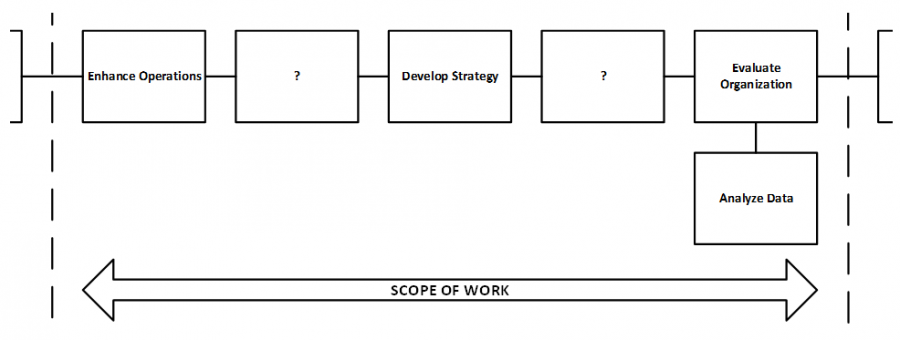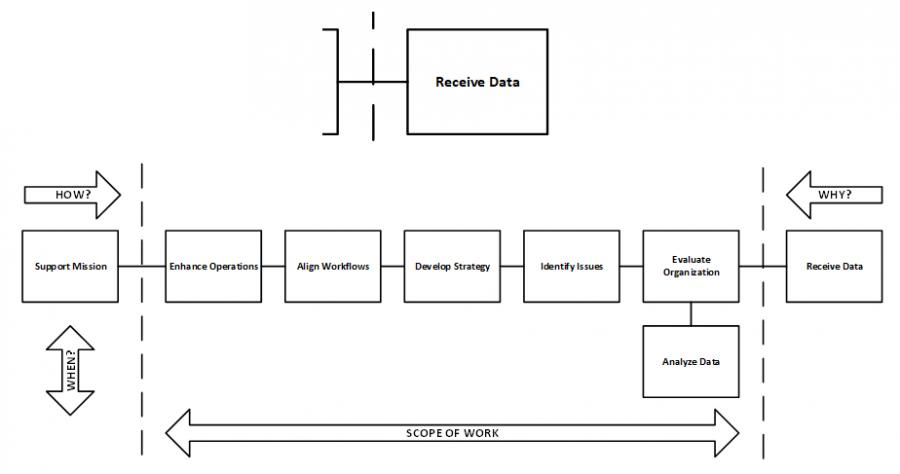By Giuseppe Nespoli, MSOD, VMA – Organization Effectiveness Consultant, Value Management Strategies, Inc.
“The only constant in life is change.” Attributed to Heraclitus in ancient Greece, this philosophy alludes to being flexible and ready for change because it is always occurring. Fast forward to today’s business world, and we see certifications and tools to help people and organizations embrace this ancient way of thinking under a new term: Agile.
Agile became part of common business vernacular in the early 2000s, but SCRUM was created a decade earlier drawing on the agile philosophy to provide guidance in software development. SCRUM and other frameworks are now part of the suite of tools available to project managers to respond to change when it occurs instead of following the traditional waterfall method of viewing the process as linear, where one step occurs after the next. Agile helps a project achieve its goals more efficiently.
This article will go beyond the use of agile in project management to the underlying philosophy that has influenced the formation of SCRUM and other frameworks. The agile philosophy can address organizational, or systemwide, change to acknowledgment volatility and uncertainty of the global environment.
Agile embeds flexibility into the organizational culture to create a shift in the mindset of employees to be adaptable as change occurs in response to internal or external factors. Change is often thought of as a monumental shift. This perceived significance makes change feel scary, but it couldn’t be further from the truth because change is constant. Major changes are the result of a series of incremental events happening long before the moment someone utters the words, “We need to change.”
Change is Gradual
When an organization recognizes the need for transformation, change has already occurred through conversations, actions, and decisions that readied the organization to acknowledge the shift. Many organizations make a common error by failing to realize that implementing change requires the same approach – a cumulative result of little conversations, actions, and decisions.
Lao Tzu expressed that “A journey of a thousand miles begins with a single step.” Change is all those little steps: conversations, actions, and decisions that individuals make that lead to a transformation. John Kotter’s 8-Step Change Model deliberately includes a step to generate short term wins. Those wins support the incremental change that is continuously occurring and should never be taken for granted.
Change Adds Value
Enter Value Engineering (VE) to view the change paradigm. VE is a creative problem-solving methodology that fosters divergent thinking by identifying functions to help individuals brainstorm broader and more creative solutions to challenges. VE is commonly used within the construction and manufacturing industries for capital projects and product development; however, it can also be applied to the thought processes related to organizational transformation.
Just as adding value in VE goes beyond cutting costs, so does Agile. Adding value or improving efficiency should consider costs as well as time, performance, and risk. Both methodologies offer ways to trim the fat on projects or products; when it involves organizations, it typically means employee layoffs. This thinking grossly underutilizes both methodologies and does a disservice to the organization.
Utilizing functions to address organizational change can help avoid the trap of focusing on cutting costs. Functions are what make VE unique. A function is what something does, so we can think of change as all the little steps that need to be done. Functions are articulated with two words – an active verb and a measurable noun. If we start distilling the functions of what “we need to change” in an organization, divergent thinking and brainstorming will allow us to explore a greater number and variety of possibilities for achieving the change.
Change is FAST
We can go a step further by utilizing the Function Analysis System Technique (FAST) Diagram to identify the critical functions related to change. The FAST Diagram arranges functions in logical order by providing a visual representation of the functions associated with the transformation to show “How,” “When,” and “Why” change is occurring.
Let’s look at an example of an organizational change process through a FAST Diagram lens. Imagine a company that is struggling with communication across multiple departments. Duplication of work is creating redundancy in departments and inefficiency overall that is resulting in impacts to their bottom line. Over several meetings and discussions, this issue and its impacts have come to light and leadership has decided to take action. One of their objectives for the change is to Improve Collaboration to better support the mission of the company. Support Mission is the higher order function.

Leadership needs to make sure the company is being productive in working towards its mission. Productivity has to do with Enhancing Operations – the basic function which is also the goal of the change. Now we can use the FAST Diagram logic to test the function order: How do we Support Mission? By Enhancing Operations. Why do we Enhance Operations? So, we can Support Mission.

Using the same logic, we can explore functions that occur simultaneously. If the change calls on the company to Evaluate Organization in order to assess their current state, then they Analyze Data when they evaluate.

All other functions within the scope lines will follow the same logic. As the functions are mapped out in the FAST Diagram, we can also notice if there are gaps to fill in the change process.

Lastly, but what happens first, the moment when leadership articulates “we need to change” is a one-time function to Accept Decision (to change). The reason to change stems from the company Receiving Data to inform that decision, the lower order function.

From right to left, we see the big picture, in chronological order, from when information comes in to inform leaderships decision to reach the desired result of supporting the company’s mission.
The diagram above represents a small subset of functions that may appear on a FAST Diagram for a change process in an organization. It does not capture everything, including employee behaviors, that would need to be addressed with the many little steps needed to achieve change that supports the mission of the organization.
When we reframe our view of change by utilizing a familiar tool, change becomes much less scary. A FAST Diagram clearly illustrates the functions that lead to the larger transformation. It allows organizations to recognize all the small steps occurring through the change so various methods to implement change can be iterative through the Creative Phase of brainstorming by function to achieve the change desired. This is where Agile and VE complement each other: iteration and development of functions to deliver value in an efficient setting.
In conclusion, our industry already has the tools to address change. As value practitioners, we can choose to move FAST to identify and prepare for the functions of change, or we can choose to react when change is forced upon us with consequences to our organization, employees, and clients.
